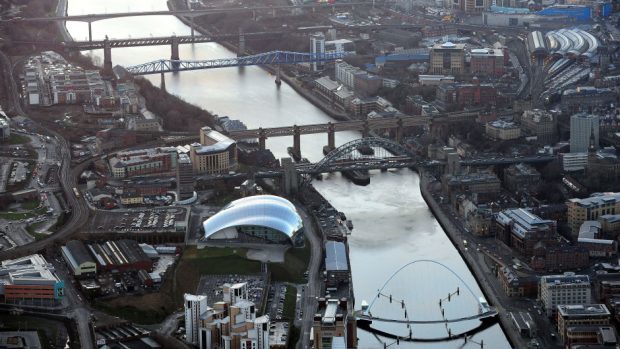Nicola Sturgeon is not known for indulging in exasperated and absurdist streams of consciousness. But that’s what seemed to happen when she fantasised about heading south of the border and imposing Scottish rule on the English.
Her flight of fancy during her daily coronavirus briefing was inspired by Boris Johnson’s comment that that there was “no such thing” as a Scottish/English border.
An intensely irritated first minister repeated Mr Johnson’s assertion, her voice laden with contempt as she condemned the prime minister for playing constitutional politics with the coronavirus.
“There is no border between Scotland and England,” Ms Sturgeon said scornfully. “I mean, it is just such an absurd statement.”
Just in case Mr Johnson was listening, Ms Sturgeon then tried to explain that there was, in fact, a “geographical boundary” to her powers as first minister.
“If the prime minister is questioning that now, I’m not sure what he would say if I pitched up in Newcastle and started to try to implement Scottish Government policy in Newcastle,” she continued, before pausing to interrupt herself.
“See what I just said there,” Ms Sturgeon remarked to her online audience of journalists. “It’s absurd too,” she snapped.
With every utterance of the word “absurd” Ms Sturgeon’s irritation intensified. “I’m not having a go at you,” she said to one journalist for daring to suggest that a “cross-border quarantine row” had erupted.
“This is public health and that fact that in Scotland we are trying to turn it into – I’m saying we to be charitable because it isnae me – but the fact that some are trying to turn this into a standard political constitutional row is frankly disgraceful,” the first minister said.
What is “reckless’ is trying to turn a public health battle against a deadly and dangerous virus into a political/constitutional argument. https://t.co/QNVJerm44q
— Nicola Sturgeon (@NicolaSturgeon) July 1, 2020
The culprits, according to Ms Sturgeon, were Mr Johnson and Scottish Secretary Alister Jack. Moments before Ms Sturgeon took to the podium for her press briefing, Mr Jack had attacked the first minister for failing to rule out quarantine for people travelling from England to Scotland.
“Reckless”, “divisive” and “irresponsible” was how Mr Jack described Ms Sturgeon’s stance when he stood up in the House of Commons. “Astonishing” was Mr Johnson’s view on the matter, before denying the existence of an Anglo/Scottish border.
“Absurd”, “ridiculous” and “shameful” was how Ms Sturgeon described Mr Jack and Mr Johnson’s behaviour as she stoked up the row to which she objected so much.
Sometimes in politics, it can help to have a sense of the absurd.










